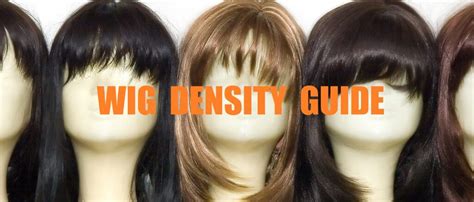Introduction
In the realm of beauty and style, wigs have emerged as a versatile tool for transforming one’s appearance. With countless options available, from human hair to synthetic fibers, wigs empower individuals to experiment with different hairstyles, enhance their confidence, and express their creativity. This comprehensive guide delves into the world of wigs, exploring their benefits, types, and techniques for achieving a natural and seamless look.

The Allure of Wigs
Wigs have gained immense popularity due to their numerous advantages:
Versatility
Wigs offer unparalleled versatility, allowing users to change their hairstyles on a whim. Whether it’s a bold pixie cut, long flowing locks, or vibrant colors, wigs accommodate diverse tastes and preferences.
Confidence Boost
By concealing hair loss, thinning, or damaged hair, wigs can dramatically boost confidence. They provide individuals with the opportunity to feel comfortable and self-assured in their appearance.
Creative Expression
Wigs transcend their practical purpose and become instruments of creative expression. They enable people to experiment with different personas, embrace various cultures, and showcase their individuality.
Types of Wigs
Human Hair Wigs
Crafted from natural human hair, these wigs offer exceptional quality and realism. They can be styled, permed, and dyed just like natural hair, providing a virtually indistinguishable look. However, their high cost and limited availability make them a premium choice.
Synthetic Fiber Wigs
Made from synthetic fibers, these wigs are more affordable and widely available. They come in a vast array of colors, textures, and styles. While they may not match the realism of human hair wigs, synthetic wigs offer durability and easy maintenance.
Choosing the Right Wig
Factors to Consider
When selecting a wig, several factors should be taken into account:
- Face Shape: Determine your face shape (oval, round, square, etc.) and choose a wig that complements its contours.
- Hair Texture: Match your wig’s texture to your natural hair for a seamless transition.
- Color: Experiment with different hair colors to enhance your skin tone and personal style.
- Length: Consider your lifestyle and personal preferences when choosing the length of your wig.
- Budget: Wigs vary in price depending on factors such as hair type and quality. Set a realistic budget before beginning your search.
Wig Cap Construction
Understanding wig cap construction is crucial for achieving a comfortable and secure fit. Common types include:
- Lace Front Wigs: Feature a transparent lace hairline that blends seamlessly with the skin, creating an illusion of natural hair growth.
- Full Lace Wigs: Made entirely of lace, offering the most realistic and breathable fit.
- Monofilament Wigs: Constructed with a thin, breathable material that mimics the scalp, providing a lightweight feel.
Techniques for a Natural Look
Achieving a natural-looking wig requires careful attention to detail. Follow these techniques:
Blending with Natural Hair
If your hair is long enough, blend it with the wig by braiding or pinning it close to your scalp. This creates a seamless transition, preventing the wig from appearing unnatural.
Secure Attachment
Use wig clips, bobby pins, or adhesive to secure the wig firmly to your head. Adjust the fit until it feels snug and secure without causing discomfort.
Styling and Maintenance
- Styling: Treat your wig as you would your natural hair. Use heat-resistant products and styling tools to achieve desired looks.
- Washing: Wash your wig regularly using a gentle shampoo and conditioner formulated for wigs. Avoid using harsh chemicals or abrasive techniques.
Applications Beyond Aesthetics
While wigs are primarily used for aesthetic purposes, their versatility extends to other applications:
Medical Use
Wigs play a vital role in concealing hair loss caused by medical conditions such as alopecia, chemotherapy, and burns. They provide comfort and dignity to individuals undergoing these treatments.
Cultural Symbolism
In various cultures, wigs hold significant cultural or religious symbolism. They represent societal status, spiritual beliefs, and historical traditions.
The Future of Wigs
The wig industry is constantly evolving, with advancements in technology, materials, and design. Key trends to watch include:
Personalized Wigs
Customization and personalization will become increasingly prevalent, enabling users to create wigs tailored to their unique needs and preferences.
Smart Wigs
Wigs will integrate sensors and other technologies, allowing for enhanced interactivity and health monitoring capabilities.
Sustainable Wigs
Eco-friendly materials and production methods will gain traction in the wig industry, promoting sustainability and reducing environmental impact.
Conclusion
Wigs have become an integral part of the beauty industry, empowering individuals to transform their appearance, boost their confidence, and express their creativity. By understanding the different types, choosing the right wig, and employing proper techniques, you can achieve a natural and seamless look that enhances your style and personal expression. Whether for aesthetic, medical, or cultural purposes, wigs continue to evolve and offer versatile solutions for a wide range of needs.
